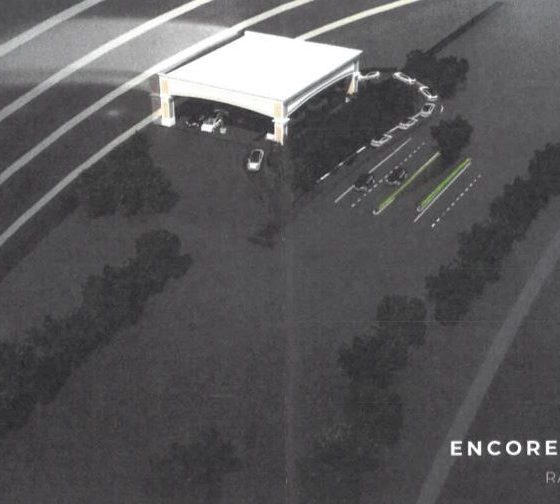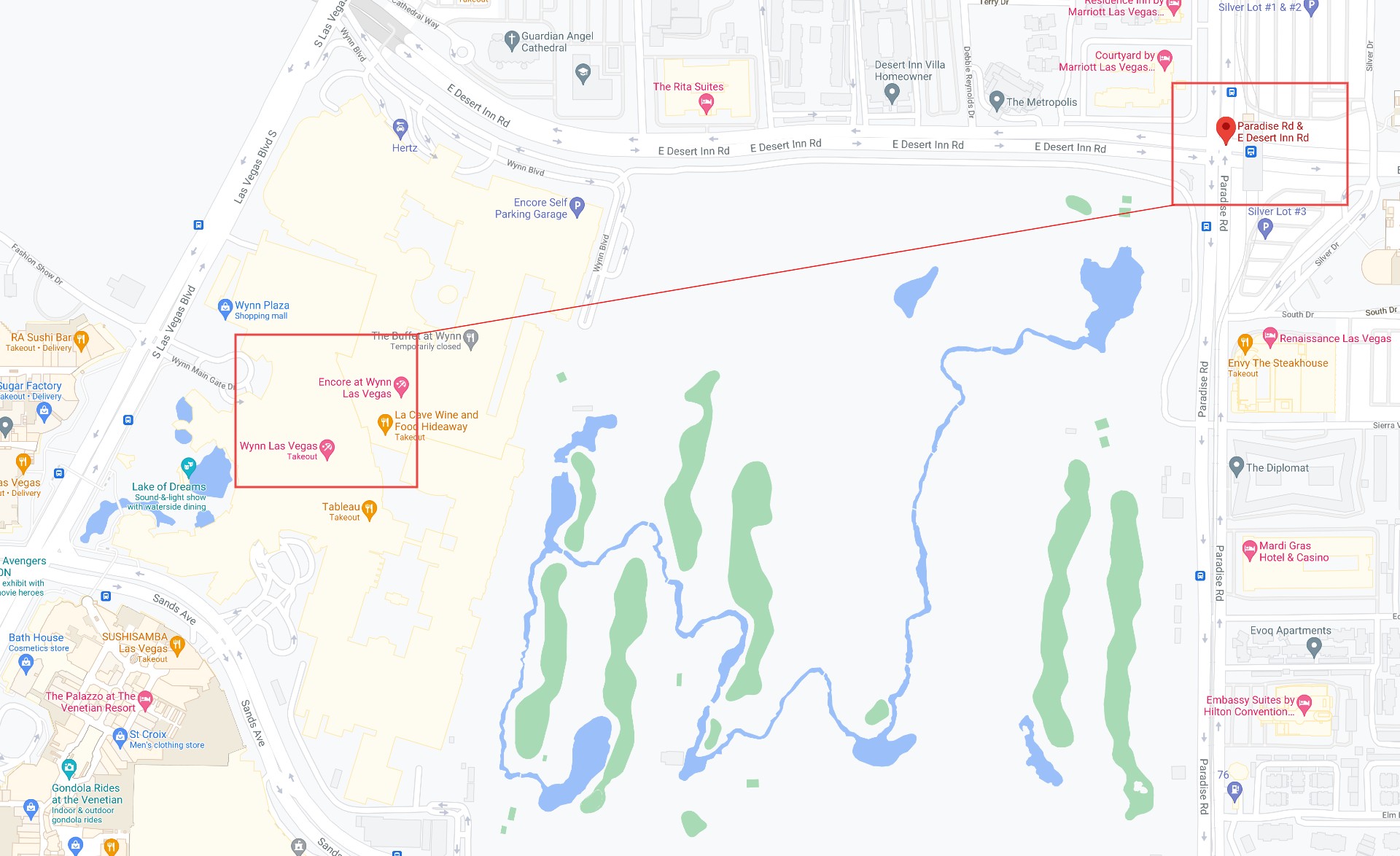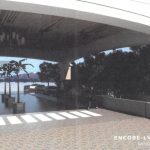

News
Boring Co. gets go-ahead for tunnel expansion to Encore at Wynn Las Vegas
The Boring Company has received an approval for a License and Maintenance Agreement from Clark County, Nevada Officials to expand its Vegas Loop to the Encore at Wynn Las Vegas. The expansion was green-lit by Officials on December 1 and will operate at the right-of-way-on East Desert Inn and Paradise Road in Las Vegas.
The intersection of E. Desert and Paradise is also the intersection of two main points of interest that are related to the Boring Company project. At the intersection, the Las Vegas Convention Center and the LVCC Monorail Station are both located. The currently dug-out tunnel is located at the LVCC, and the LVCVA, who operates the LVCC, recently purchased the rights to the Las Vegas Monorail, giving the Boring Company more leeway in where it can establish future locations for tunnels.
Another step in the Las #Vegas people mover project. Commissioners just approved a license & maintenance agreement for @boringcompany to use part of the right-of-way on Desert Inn & Paradise to build & operate tunnels connecting the Las Vegas Convention Ctr. to @EncoreLasVegas. pic.twitter.com/WykHpRHUNe
— Clark County Nevada (@ClarkCountyNV) December 1, 2020
The area of the intersection would be a great way to transport visitors from their hotels to resorts and clubs on the Strip. The intersection is located just East of the Strip and is surrounded by several chain hotels such as Residence Inn by Marriot, Courtyard by Marriot, and an Embassy Suites by Hilton.
These lodging choices provide places to sleep and perhaps some food options, but nothing compared to what is available on the Strip. The Encore at Wynn is located on the North end of the Strip and is surrounded by the Venetian, Treasure Island, the Mirage, Harrah’s, and Caesar’s Palace. All of these options provide entertainment and nightlife, as well as various dining options that will provide visitors with a full experience of what Las Vegas has to offer.
The intersection of Paradise and Desert Inn is relatively close to the Wynn, but it would require some form of transportation. This is where the Boring Co. expansion comes in. (Credit: Google Maps)
The underground tunnel that the Boring Company will eventually dig out on this route will provide a reasonable and fast mode of transportation from off-strip lodging options to the heart of the city. Inversely, traveling from the Wynn to the Convention Center will take only a few moments, so if there is an event that is being held at the LVCC, there will be quick and reliable transportation options that will move people from location to location with relative ease.
- Credit: Clark County, Nevada
- Credit: Clark County, Nevada
The Encore at Wynn becomes the second resort to be approved for the Boring Co.’s expansion of the Vegas Loop, the first being another Wynn-owned property of Resorts World.
The Boring Company expansion is far from over, though. Eventually, Elon Musk’s traffic solution company plans to have stops at nearly every major point of interest in Las Vegas, with approval for all of the locations needed. It will undoubtedly take some time to put together, but the new mode of people-moving in Las Vegas has some life, and resorts are beginning to recognize the significance of the Boring Co.’s plans. New transportation is needed in Las Vegas, and smaller, more personalized vehicles may be a great way to make public transport more appealing and could be a solution to traveling after the COVID-19 pandemic.

News
Tesla starts showing how FSD will change lives in Europe
Local officials tested the system on narrow country roads and were impressed by FSD’s smooth, human-like driving, with some calling the service a game-changer for everyday life in areas that are far from urban centers.

Tesla has launched Europe’s first public shuttle service using Full Self-Driving (Supervised) in the rural Eifelkreis Bitburg-Prüm region of Germany, demonstrating how the technology can restore independence and mobility for people who struggle with limited transport options.
Local officials tested the system on narrow country roads and were impressed by FSD’s smooth, human-like driving, with some calling the service a game-changer for everyday life in areas that are far from urban centers.
Officials see real impact on rural residents
Arzfeld Mayor Johannes Kuhl and District Administrator Andreas Kruppert personally tested the Tesla shuttle service. This allowed them to see just how well FSD navigated winding lanes and rural roads confidently. Kruppert said, “Autonomous driving sounds like science fiction to many, but we simply see here that it works totally well in rural regions too.” Kuhl, for his part, also noted that FSD “feels like a very experienced driver.”
The pilot complements the area’s “Citizen Bus” program, which provides on-demand rides for elderly residents who can no longer drive themselves. Tesla Europe shared a video of a demonstration of the service, highlighting how FSD gives people their freedom back, even in places where public transport is not as prevalent.
What the Ministry for Economic Affairs and Transport says
Rhineland-Palatinate’s Minister Daniela Schmitt supported the project, praising the collaboration that made this “first of its kind in Europe” possible. As per the ministry, the rural rollout for the service shows FSD’s potential beyond major cities, and it delivers tangible benefits like grocery runs, doctor visits, and social connections for isolated residents.
“Reliable and flexible mobility is especially vital in rural areas. With the launch of a shuttle service using self-driving vehicles (FSD supervised) by Tesla in the Eifelkreis Bitburg-Prüm, an innovative pilot project is now getting underway that complements local community bus services. It is the first project of its kind in Europe.
“The result is a real gain for rural mobility: greater accessibility, more flexibility and tangible benefits for everyday life. A strong signal for innovation, cooperation and future-oriented mobility beyond urban centers,” the ministry wrote in a LinkedIn post.
News
Tesla China quietly posts Robotaxi-related job listing
Tesla China is currently seeking a Low Voltage Electrical Engineer to work on circuit board design for the company’s autonomous vehicles.

Tesla has posted a new job listing in Shanghai explicitly tied to its Robotaxi program, fueling speculation that the company is preparing to launch its dedicated autonomous ride-hailing service in China.
As noted in the listing, Tesla China is currently seeking a Low Voltage Electrical Engineer to work on circuit board design for the company’s autonomous vehicles.
Robotaxi-specific role
The listing, which was shared on social media platform X by industry watcher @tslaming, suggested that Tesla China is looking to fill the role urgently. The job listing itself specifically mentions that the person hired for the role will be working on the Low Voltage Hardware team, which would design the circuit boards that would serve as the nervous system of the Robotaxi.
Key tasks for the role, as indicated in the job listing, include collaboration with PCB layout, firmware, mechanical, program management, and validation teams, among other responsibilities. The role is based in Shanghai.
China Robotaxi launch
China represents a massive potential market for robotaxis, with its dense urban centers and supportive policies in select cities. Tesla has limited permission to roll out FSD in the country, though despite this, its vehicles have been hailed as among the best in the market when it comes to autonomous features. So far, at least, it appears that China supports Tesla’s FSD and Robotaxi rollout.
This was hinted at in November, when Tesla brought the Cybercab to the 8th China International Import Expo (CIIE) in Shanghai, marking the first time that the autonomous two-seater was brought to the Asia-Pacific region. The vehicle, despite not having a release date in China, received a significant amount of interest among the event’s attendees.
Elon Musk
Elon Musk and Tesla AI Director share insights after empty driver seat Robotaxi rides
The executives’ unoccupied tests hint at the rapid progress of Tesla’s unsupervised Robotaxi efforts.

Tesla CEO Elon Musk and AI Director Ashok Elluswamy celebrated Christmas Eve by sharing personal experiences with Robotaxi vehicles that had no safety monitor or occupant in the driver’s seat. Musk described the system’s “perfect driving” around Austin, while Elluswamy posted video from the back seat, calling it “an amazing experience.”
The executives’ unoccupied tests hint at the rapid progress of Tesla’s unsupervised Robotaxi efforts.
Elon and Ashok’s firsthand Robotaxi insights
Prior to Musk and the Tesla AI Director’s posts, sightings of unmanned Teslas navigating public roads were widely shared on social media. One such vehicle was spotted in Austin, Texas, which Elon Musk acknowleged by stating that “Testing is underway with no occupants in the car.”
Based on his Christmas Eve post, Musk seemed to have tested an unmanned Tesla himself. “A Tesla with no safety monitor in the car and me sitting in the passenger seat took me all around Austin on Sunday with perfect driving,” Musk wrote in his post.
Elluswamy responded with a 2-minute video showing himself in the rear of an unmanned Tesla. The video featured the vehicle’s empty front seats, as well as its smooth handling through real-world traffic. He captioned his video with the words, “It’s an amazing experience!”
Towards Unsupervised operations
During an xAI Hackathon earlier this month, Elon Musk mentioned that Tesla owed be removing Safety Monitors from its Robotaxis in Austin in just three weeks. “Unsupervised is pretty much solved at this point. So there will be Tesla Robotaxis operating in Austin with no one in them. Not even anyone in the passenger seat in about three weeks,” he said. Musk echoed similar estimates at the 2025 Annual Shareholder Meeting and the Q3 2025 earnings call.
Considering the insights that were posted Musk and Elluswamy, it does appear that Tesla is working hard towards operating its Robotaxis with no safety monitors. This is quite impressive considering that the service was launched just earlier this year.










